If you are traveling with the camper van not only in midsummer and in the south, but also want to travel in spring, autumn or even winter, you need heating on board for pleasant temperatures. You can find out which types of camper van heating there are here.
Inhalt
Why you need camper van heating
Why install heating in the camper van at all? The thermal sleeping bag works too, and wasn’t it possible in the past without camper van heating?
Yes, a lot is possible. But do you really want to buy an expensive recreational vehicle and then make enormous sacrifices in comfort, or do you want to do without winter camping completely? The camper van increases the utility and comfort of your camping vehicle and extends your camping season .
Heat the camper van in the transition period and in the north
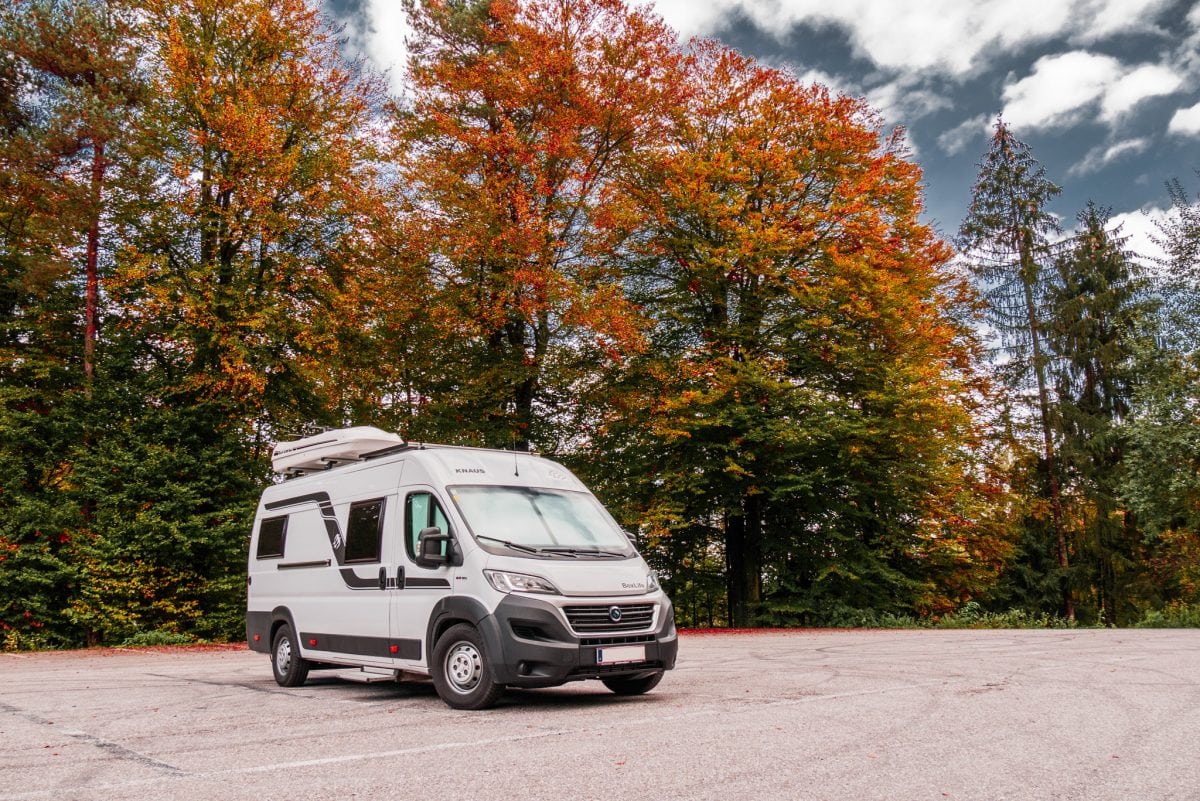
From spring to autumn camper van heating may not be necessary, but it makes perfect sense. In a heated camper van, you will feel comfortable even in cool temperatures (e.g. at night, in bad weather, or when traveling north. Not only the interior of the camper van is heated by heaters, because modern heaters also heat hot water. Not only can you take a warm shower without having to rely on campsites, it also makes washing up easier.
- In the transitional period it cools down a lot at night. A vacation is harder to enjoy when it is cold.
- Showering with hot water is only possible with a heater.
- Dishwashing works better with warm water.
- In the camper van it is also important to get the moisture out of the vehicle after showering. This is actually only possible with heating, otherwise the moisture does not dry up.
Heat the camper van in winter
When camping in winter, heating in the camper van is irreplaceable. You cannot travel without heating, it would be dangerous to your health.
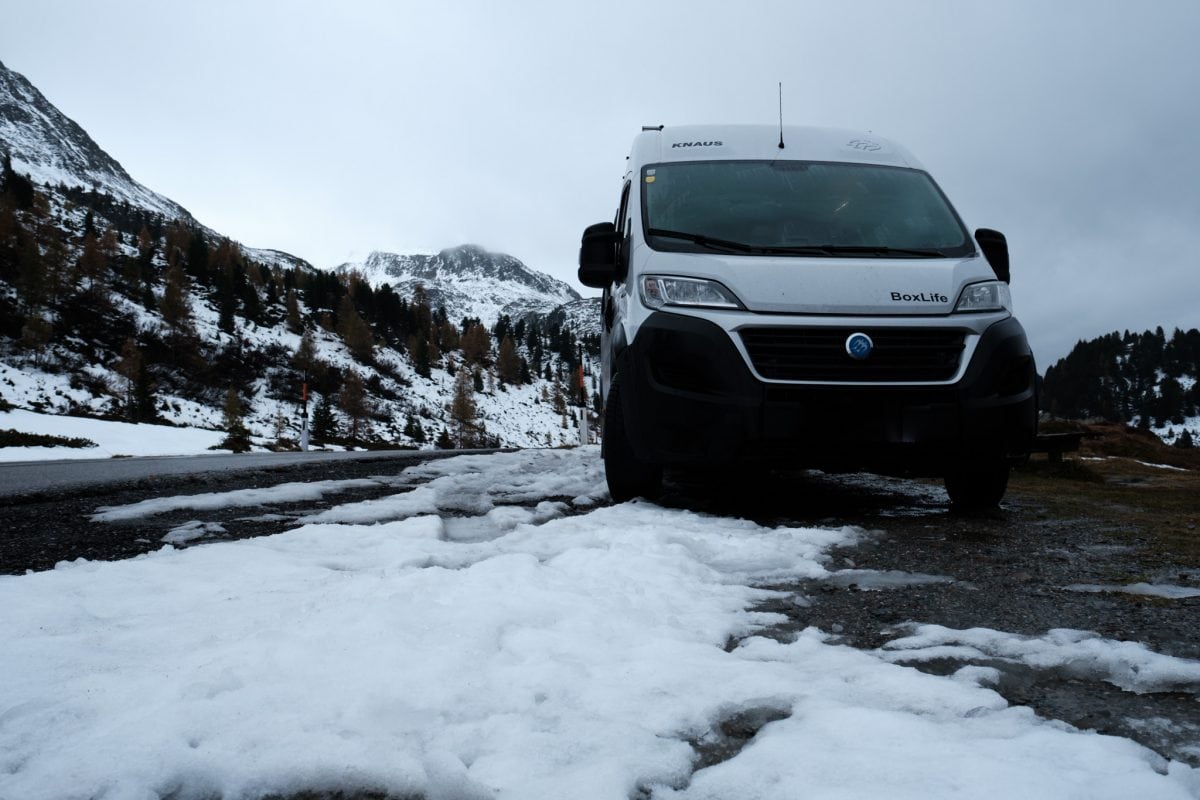
Temperatures around and below 0°C are no fun even with a thermal sleeping bag, and at night they are not harmless to health. Also during the day, staying in the camper van is uncomfortable in winter temperatures. A camper van heating helps you make yourself comfortable in the motorhome. However, this requires a model with a higher heating capacity.
But your mobile home technology will also thank you if you protect it from frostbite. Lines and tanks can burst from frozen liquid , which then leads to expensive repairs (and the cancellation of a vacation). If your mobile has no heated tanks and pipes – don’t worry: the heat radiation from the vehicle is often enough to prevent it from freezing. What is possible and what is not always depends on the overall concept of the vehicle.
In winter it cannot be avoided to bring moisture into the vehicle . Without heating in the motorhome, the moisture remains in the vehicle. Heating the motorhome in winter is therefore also popular for drying, because the heater helps you dry out.
In winter you need a motorhome heater for the following reasons:
• Wellbeing & health
• Protect tanks and lines
Use the motorhome heater on the go
When traveling , a mobile home is usually heated like a car: The heat generated by the combustion engine is used to direct warm air into the interior.
When we speak of RV heaters, but parking heaters are almost always meant that work with the vehicle parked. Then no engine waste heat is available.
Heat the living space while driving
However, the cab heater is often overwhelmed with heating the large living space of a motorhome while driving . As a result, occupants in the rear seats can freeze in winter, and here, too, there is a desire for the interior of the motorhome to be heated by auxiliary heating. This is possible with a diesel heater or with a gas heater and corresponding safety valves (according to UN ECE R 122) directive).
What types of RV heaters are there?
The motorhome is usually heated with gas or diesel. Special expedition mobile homes also use solid fuel heating.
You’ll also find an overview of camper van heating possibilities in our video:
[youtube]vT2gd6g4DYY[/youtube]
Motorhome heating for stationary stays
Parking heaters for the motorhome (by the way also in the caravan) have to cope with some challenges. For example, the insulation of motorhomes is usually less good than that of houses. (U-value of approx. 0.5 instead of 0,25). Also, the heating in the camper (unlike in the house) is not supported by the storage effect of the walls. In the motorhome, walls do not radiate heat, i.e. after the end of the heating phase, the interior cools down almost immediately.
Motorhome heaters can be classified according to several points of view:
- Which medium is heated? (air or water)
- Which energy source is used for this? (gas, diesel, electricity, etc.)
The heating medium: air or water
To feel comfortable in the camper van, your environment must be sufficiently warm, i.e. the air around you. This air can now be
- heated directly ,
- or, the camper heater first heats water, which then releases heat back into the air (like a radiator at home).
Variant 1: The motorhome heating heats water

In the upper class of motorhomes, it is possible to install heating systems similar to those at home.
A frost-proof glycol mixture is heated, which then circulates through radiators and thus heats the interior (air and adjacent furniture). This heating is known under the brand name “Alde“.
The advantages of this method include:
- A pleasant indoor climate (due to radiation effect and uniform, indirect heating)
- The possibility to put in a floor heating.
- Alde heating can also be done electrically with landline power.
As always, travel no light without shadows. In camper van travel serious disadvantages:
- High weight
- High costs
- Slower Heating
Variant 2: The motorhome heating heats air
The vast majority of the camper heaters save the expensive and heavy detour over the water, and heats air directly. The air is then distributed (via blowers and pipes) in the vehicle. The system is much simpler, heavy lines are saved and the interior is heated faster.
The advantages of air heating therefore include:
• Cost-effective
• Lower weight and easier installation
• fast heating up
As disadvantages the reverse
- a less pleasant indoor climate (comparable to the heating in the car) and
- a less even heating.
You can find out more about the system differences between air and water heating at Promobil and Autoscout24.
The energy sources of motorhome heating
Next, let us look at the possible energy sources for camper van heating. The standard solution in the camper van is clearly the gas heating. If you want to heat in the camper van or in the caravan without gas, however, travel some alternatives, e.B:
• Diesel heating
• Electric heating
But more on that later.
Gas heating: The camper van #1
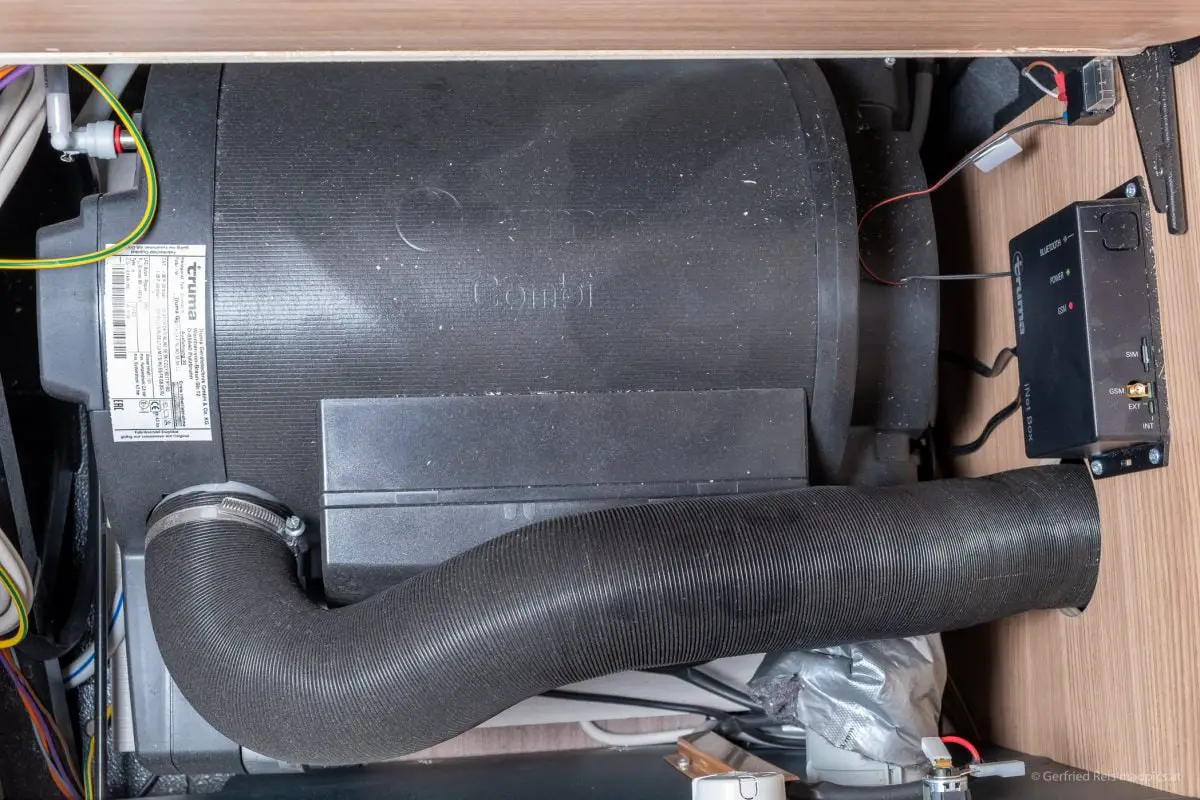
If your camper van has a gas plant, it is obvious to heat with gas as well.
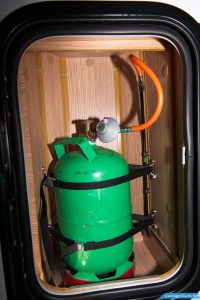
So you use the same energy source for camper van, Cooking and Refrigerator. The gas heating for camper van is time-tested and the high quantities also make this heating affordable.
With a gas heater, you can usually set a target temperature on a control panel. In addition, you choose whether only the interior or water should be heated.
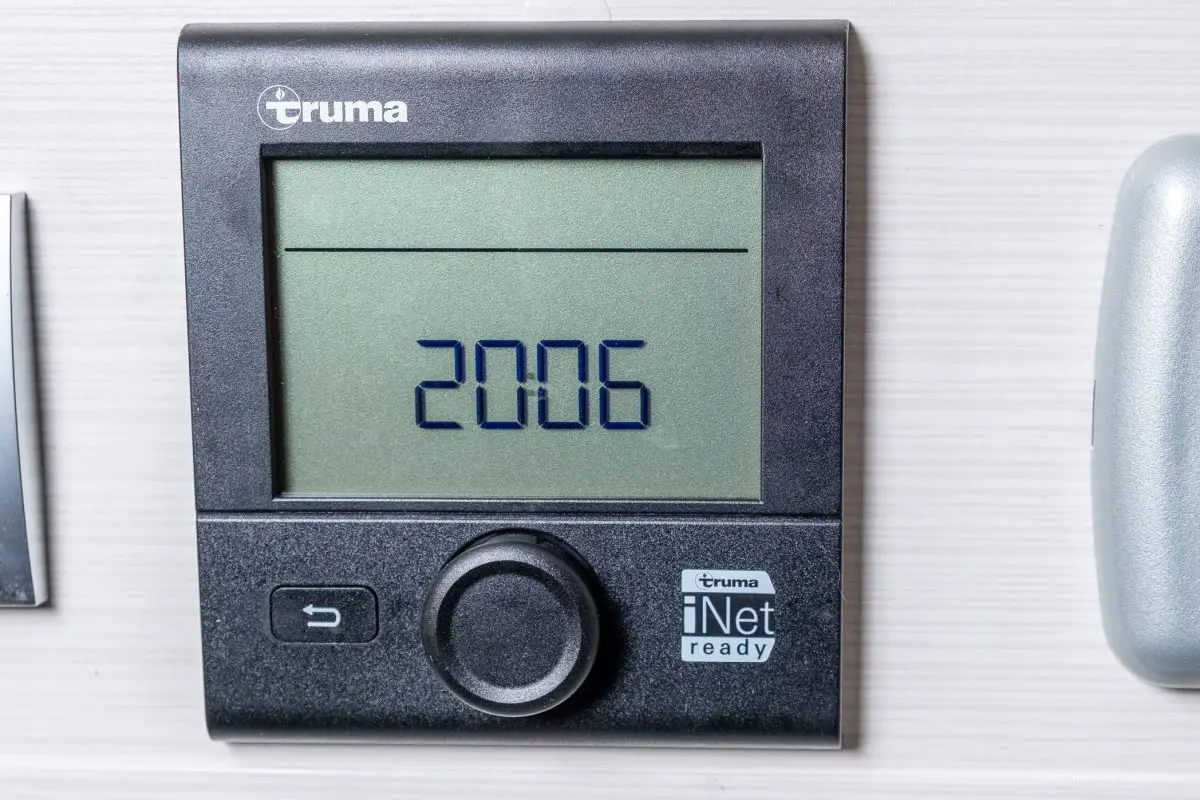
An automatic ignition gas burner then heats air and/or water. fresh air is sucked in from the outside. exhaustgases are also released outwards, which is why a gas heater always requires the installation of a fireplace.
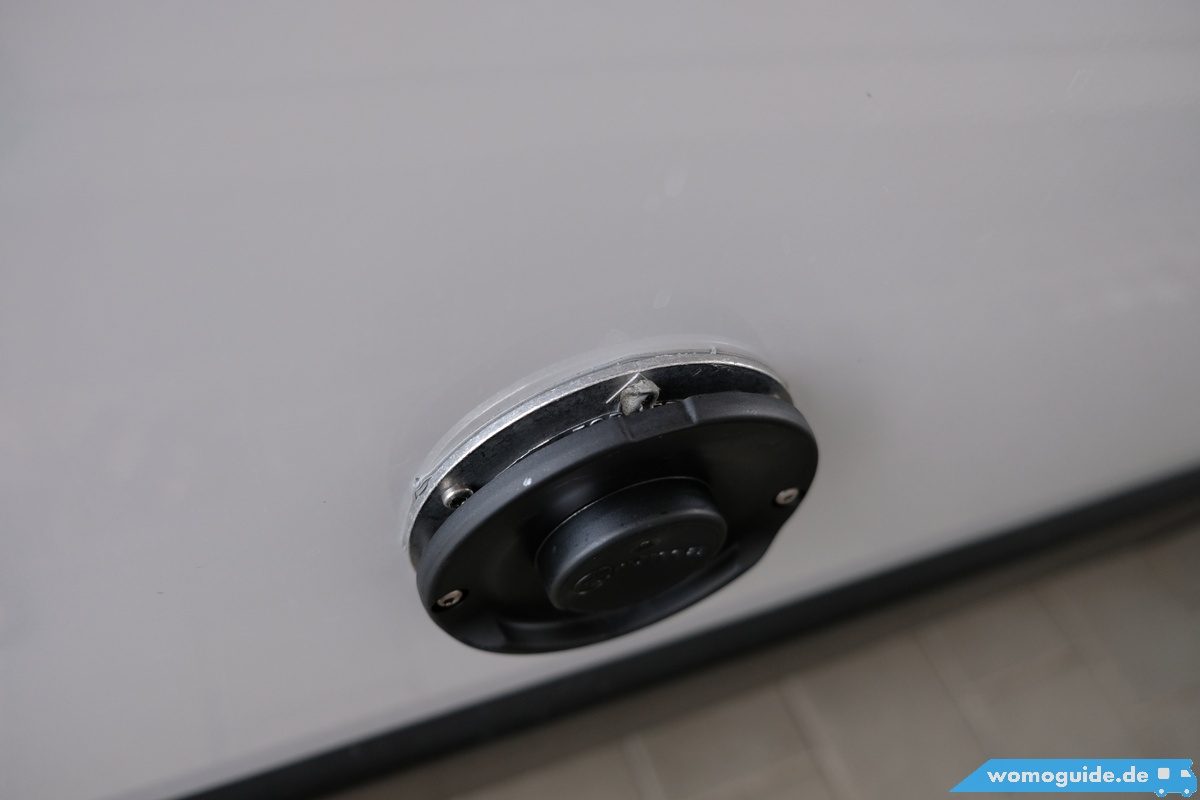
A disadvantage of gas heating is that gas cylinders or a separate gas tank is required for the energy supply. If the refrigerator is also to be operated with gas and cooked, this is also justifiable. However, alternative concepts with diesel heating and electrically operated compressor refrigerator can save space for the gas cylinders. Unfortunately, there are also no uniform standards for gas cylinders, which is why it can often be very difficult to exchange abroad.
Distribute heat: convection or fan
There are two variants of camper van heaters
- convection heating
- Fan heating
Gas heating based on the convection principle
With convection heating, the heater heats the surrounding air. The rising, warm air creates an air flow that distributes the warm air. In the case of convection, it is essential to install the heating in a suitable, preferably central point. If a suitable installation location is not available, the camper van only heats up unevenly (and slowly). Therefore gas heaters based on the convection principle are rarely the first choice when it comes to camper van heating. You can use it to heat without a 12V supply. You can find an example in the form of the Truma-S .
Gas heating with circulating air blower
Since a convenient installation location is often difficult to realize in the camper van, the fan variant is much more often used. The heating is somewhere in the camper van, and the heated air is blown into all corners by means of a fan. Here it does not matter where the heating is installed and what position it has, a concealed installation is not a problem. Through thick pipelines, the warm air is (relatively) evenly fed into all corners of the camper van. The blower always provides the burner with ideal air, which is why it generally achieves higher performance. However, this heating variant requires a 12V supply. If the battery is empty, it cannot be heated.
Heat the water with the gas heater
Most gas heaters have an integrated hot water boiler. The hot water boiler of a Truma Combi D holds .B 10l. During winter operation the boiler is automatically heated in heating mode, provided it is filled with water. (This can be achieved by completely opening the taps until no more air is leaking.)

In summer operation the hot water boiler can be heated separately.
A frost monitor is usually installed to protect against frost. At temperatures around 3 ° C, this opens a valve to empty the boiler. It is advisable to operate the frost monitor periodically to prevent calcification. Truma recommends triggering the “Frostcontrol” system every 6 months.
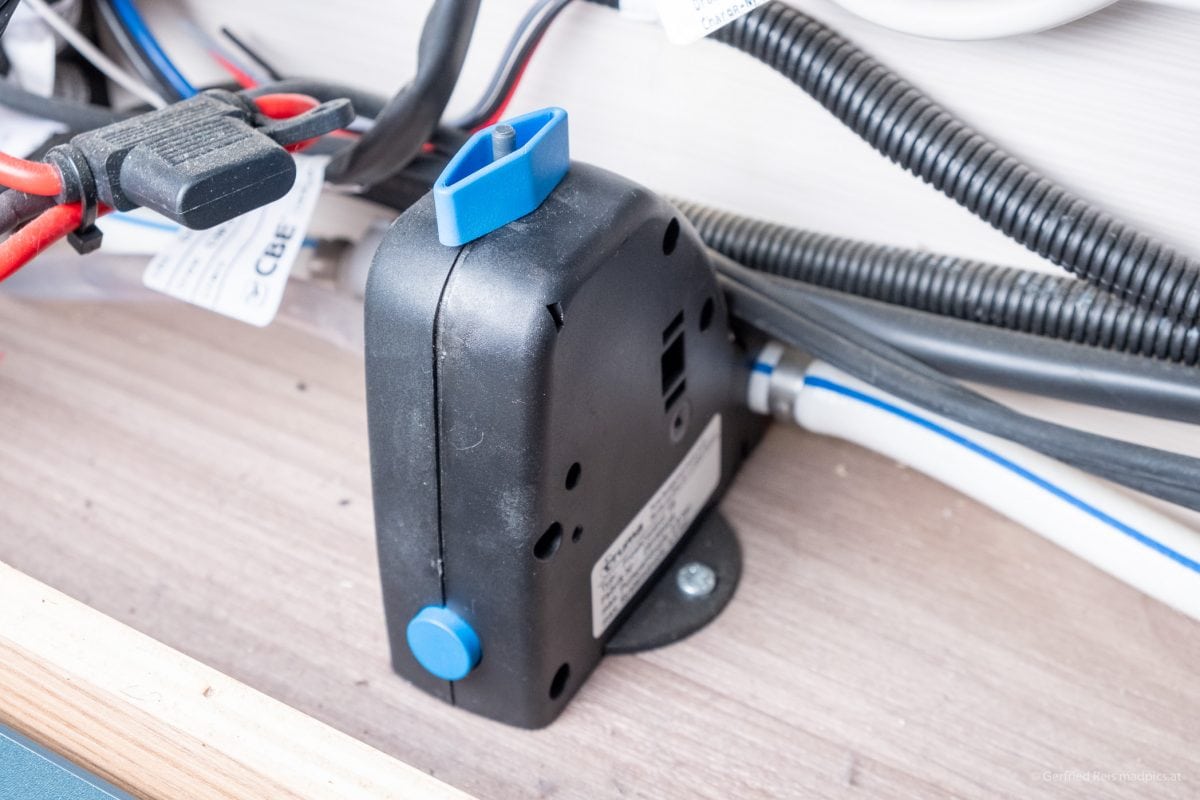 d
d
Regular descaling of the boiler with citric acid is also recommended.
Keine Produkte gefunden.
Fuel consumption of gas heating
For the Combi 6 Truma specifies a gas consumption of 160-460g / h. In other words, at the maximum level, an 11kg bottle would be used up in 24 hours. At the lowest level, it is enough for 3 days.
Operation of the gas heating while driving
If you want to operate your gas heating while driving, it must be ensured that no gas can leak in the event of an accident. For this purpose, travel safety shut-off devices (according to UN ECE R 122) that automatically and immediately interrupt the gas supply in the event of an accident by means of crash sensor and valves. Truma travel the Monocontrol CS systems (for one gas cylinder) and Duocontrol CS (for two gas cylinders). If you build the system yourself, you must have a gas test carried out again afterwards!
Keine Produkte gefunden.
Heat the camper van without gas
If you want to do without gas for heating in the camper van, you basically have three options:
- You can heat electric. However, this is hardly possible autonomously, and one is dependent on land power.
- You can rely on a diesel heating, which is now a very popular option.
- You can build in a solid fuel heating system and, for example, heat with wood. This is only an option at all for very large motorhomes.
Theoretically, you can also use gasoline heating, but this is a niche solution.
The electric motorhome heating
With electric heating, air is heated using heating rods .
In most motorhomes, electrical heating is only possible possible if landline power is always available . An electric heater would drain a car battery in no time.
Many campers take ordinary fan heaters with them as replacement heating for emergencies or to support the actual camper van. Gas heating systems with electrical support now also exist.
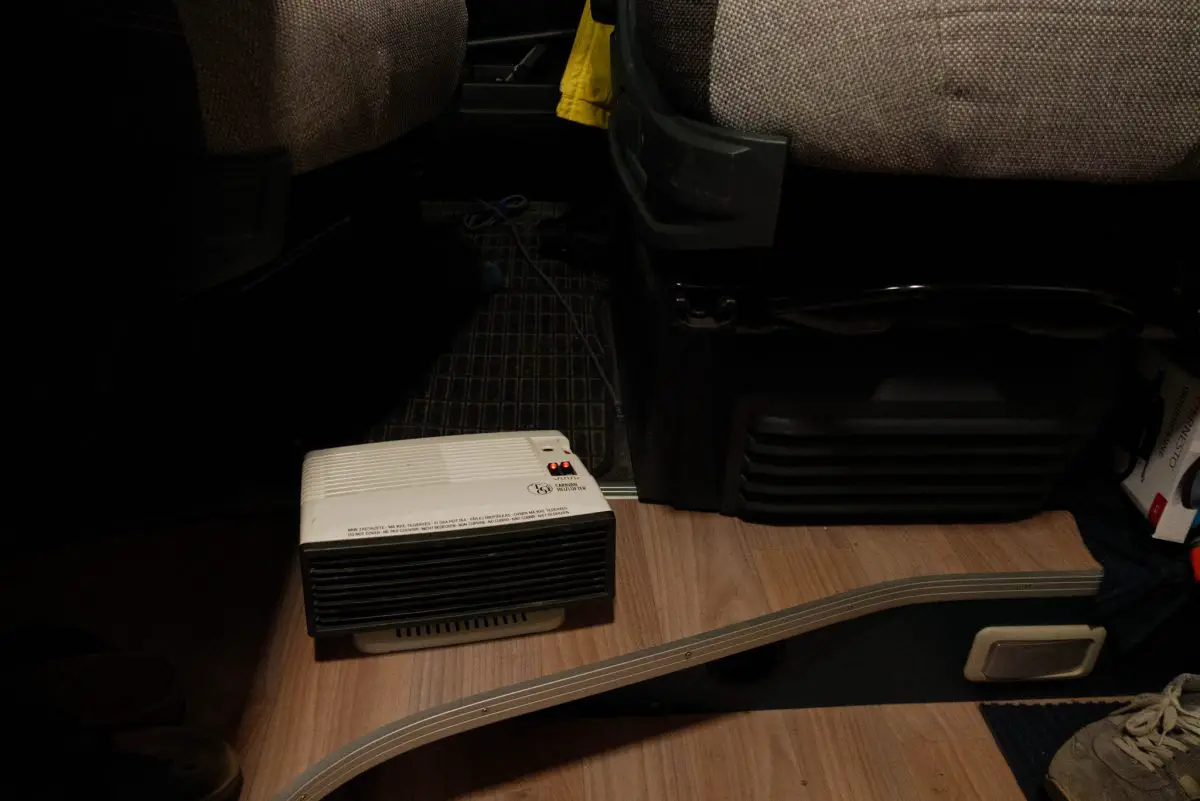
Since there is no combustion when heating with electricity, installing an electric heater is easy . No exhaust chimney is required, the heater can only be set up when needed and otherwise stowed away.
However, this does not necessarily mean that no emissions are generated overall with electric heating: The discussion is familiar from the electric car: after all, electricity must also be generated. In the camper van itself, however, you are safe from exhaust fumes.
Functional principles of electric heating
As with gas heating travel, there are also two functional principles for electric heating:
- Convection , whereby the heater only warms the ambient air
- Heaters with a fan , which distributes the air in the interior.
Analogous to gas heating, an electric convector is quiet, but it has more difficulties in distributing the air throughout the camper van. With the fan version, however, there is an annoying background noise.
Hybrid motorhome heaters
There are now combined gas / electric heating systems . For example, the Truma Combi E has 230V heating rods installed. A mixed heating operation is made possible, whereby you always heat electrically at the campsite (with shore power connection). The gas burner only switches on when there is an increased heating requirement. So you don’t need any other device.
Fan heater for the mobile home
Ordinary fan heaters are also suitable as replacement and additional heating for camper van. A landline power connection is required for this. But be careful: fan heaters with high power consumption can push the fuses at many campsites to their performance limits. In many cases, heating with electricity is also prohibited on campsites.
The advantages of fan heaters include
- low price, as well as
- compact dimensions.
The disadvantages include
- the background noise.
- In addition, fan heaters can be a source of danger if they fall over or are accidentally covered.
A fan heater that is often recommended for camper van is the Ecomat 2000
Keine Produkte gefunden.
Frost monitor: The fan heater alternative without a fan
So-called frost monitors are an alternative based on the convection principle. These are available with low power consumption, do not cause any noise and can be used as additional heating (e.g. also for the night) with adjustable thermostats.
Infrared heating in the mobile home
The main difference in infrared heating compared to conventional electric heating is that the air is not heated first, but directly the illuminated surface via infrared radiation. This avoids swirling air (and dust). Infrared heating panels travel in different sizes so that they can be considered as practical additional heating. Their advantage is clearly in the compact design, but they are nevertheless a rather exotic solution in motorhomes.
Electric blankets for selective support of the heating
Electric blankets (also known as heated blankets) help you to selectively heat exactly where you need it at night: in bed. You just put it under your bed cover and then have cozy warmth in bed. This is definitely an option for heating efficiently and still creating cozy warmth in bed. The air is logically not heated here.
If you are at the campsite in winter, you can use a powerful version for 230V.
Keine Produkte gefunden.
12V versions on the go are also available. But be careful not to empty your batteries!
Keine Produkte gefunden.
Further, practical accessories for the cold season in the camper can be found here.
Heating carpet or heating foil for underfloor heating and more
Heating carpets can also be made using the same principle as with the electric blanket. In this way you achieve pleasant underfloor heating, for example in the dining area or the cab floor . Suitable heating carpets can even be used for heating in the wet room
Keine Produkte gefunden.
These carpets can also be used as heating curtains , for example to combat cold bridges.
A heating foil can be cut to the right size. Usually they are also used to implement underfloor heating. But there are also transparent variants for attaching to windows.
The diesel heating system
An increasingly popular alternative to conventional gas heating in the camper van is diesel heating. The most obvious advantage of this camper van heating system is obvious: almost every European camper van runs with diesel and has a correspondingly large fuel tank. If you use this for the heating, you can save the space for large gas cylinders.
Refueling , in particular, is much easier than with gas: While it is often difficult to swap gas bottles abroad, every filling station is a suitable place to go for diesel heating fans. This can be an advantage if there is a high need for heating abroad (e.g. when traveling to Scandinavia in winter).
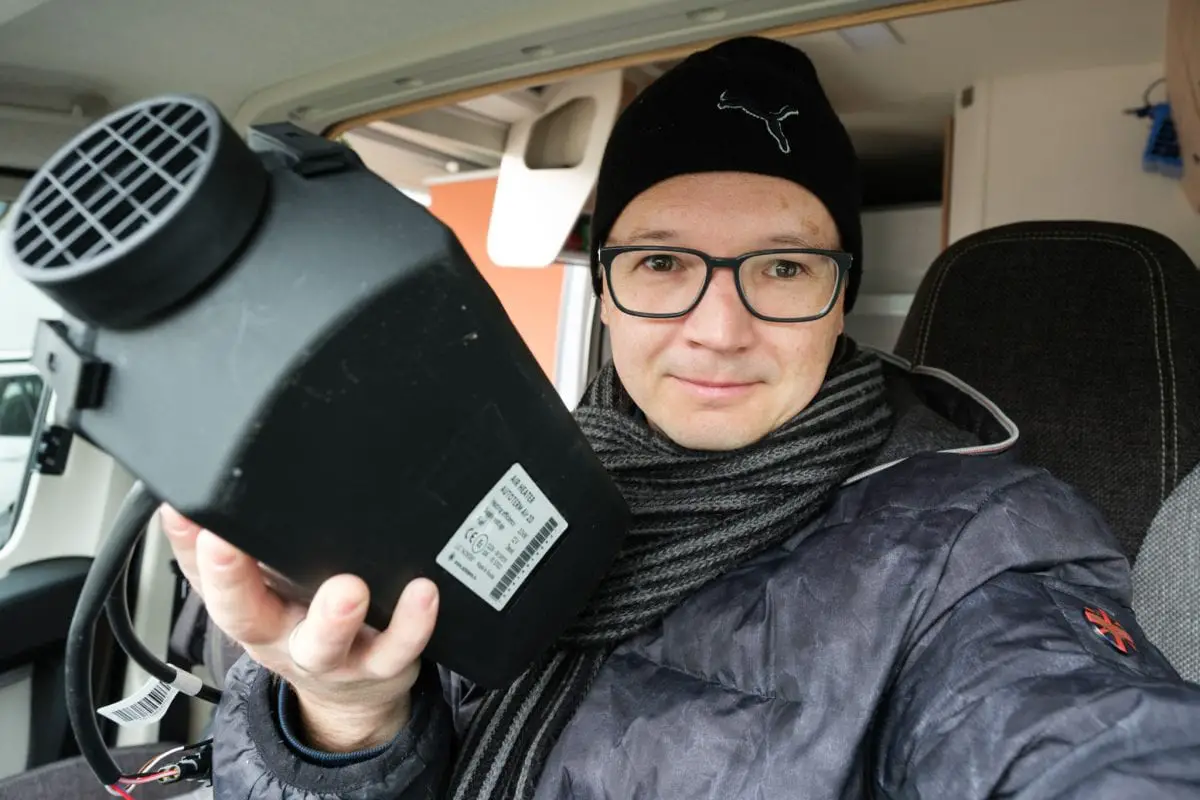
These advantages convinced us in the end, which is why we retrofitted a diesel heating into our camping van (in addition to gas heating). Our choice became the Autoterm 2D, since this heating is not only affordable, but also really good. Additionally, it can be easily installed under the passenger seat (or other suitable positions). An article about installing the diesel heating is coming soon! You can buy the heating at tigerexped, since you get perfect-fit packages (affiliate link) with all the necessary small parts and expert advice.
On the other hand, concerns about diesel engines also apply to diesel heaters.
Diesel heating works very similar to gas heating, diesel is burned instead of gas. Then air and / or water is heated again and the warm air is distributed by a fan.
Advantages of diesel heating:
- simple diesel refueling at every gas station
- Can run while driving
Disadvantages of diesel heating:
- The diesel pump creates a background noise
- an odor nuisance to the neighbors is possible. (but with modern diesel heaters not as bad as with earlier models)
- Diesel heating is less efficient than gas heating
- High power consumption
- a necessary replacement of the combustion chamber after a few years
- if you do not pay attention, you can use up the diesel with the heater and then you can no longer start.
- costs more than gas heating
The high power consumption of diesel heating disappoints many who see diesel heating as the ideal solution for free standing. If the power supply is not ensured, heating will stop after a few days.
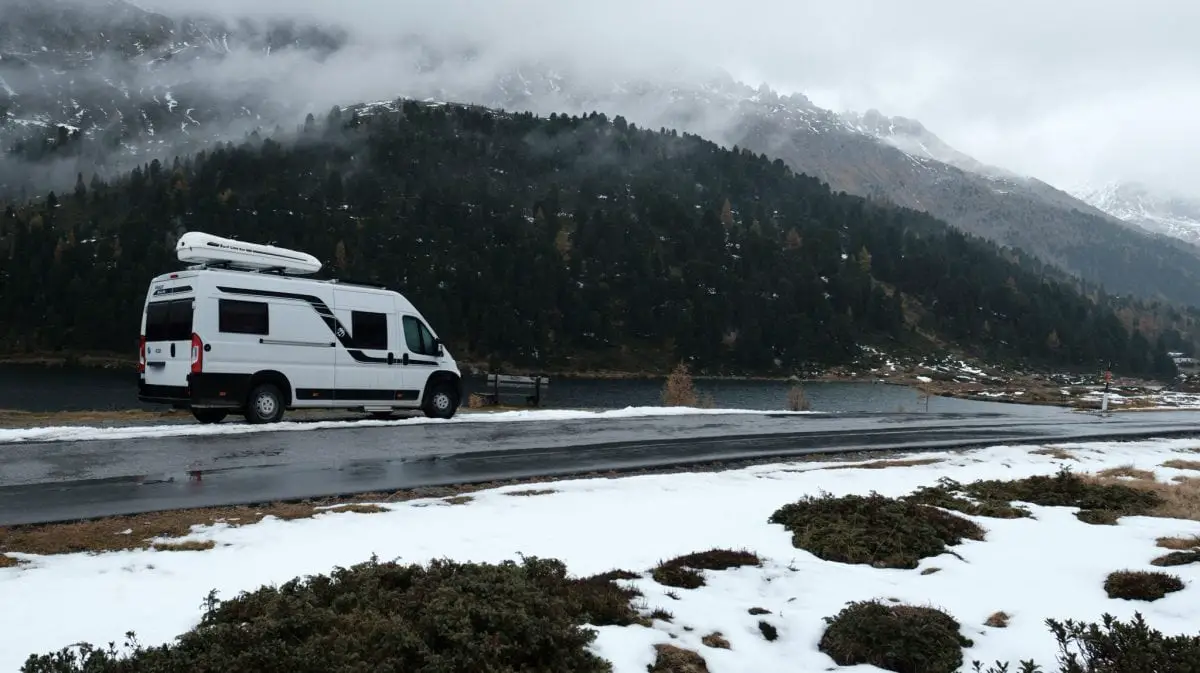
Above all, a high starting current means that a well-charged battery is necessary in order to be able to heat at all. (Eg Truma D6: 1,8 – 4A) Especially when heating is required (namely in the cold season), it is often not possible to balance the electricity demand with solar panels .
Fuel consumption of the diesel heating
The lowest level of the Truma D6 consumes 220ml / h for an output of 2000W. If you need an average of 1000W heating power, this results in a consumption of 110ml / h according to Truma. At 24 hours that would be 2.6l, which at an assumed diesel price of € 67,820 results in around € 72,271 heating costs per day.
Theoretically, you can heat for 37 days with a 100l diesel tank. A real alternative for winter campers who do not want to change the gas bottle every 3 days. For freestanding, however, the power consumption stands in the way.
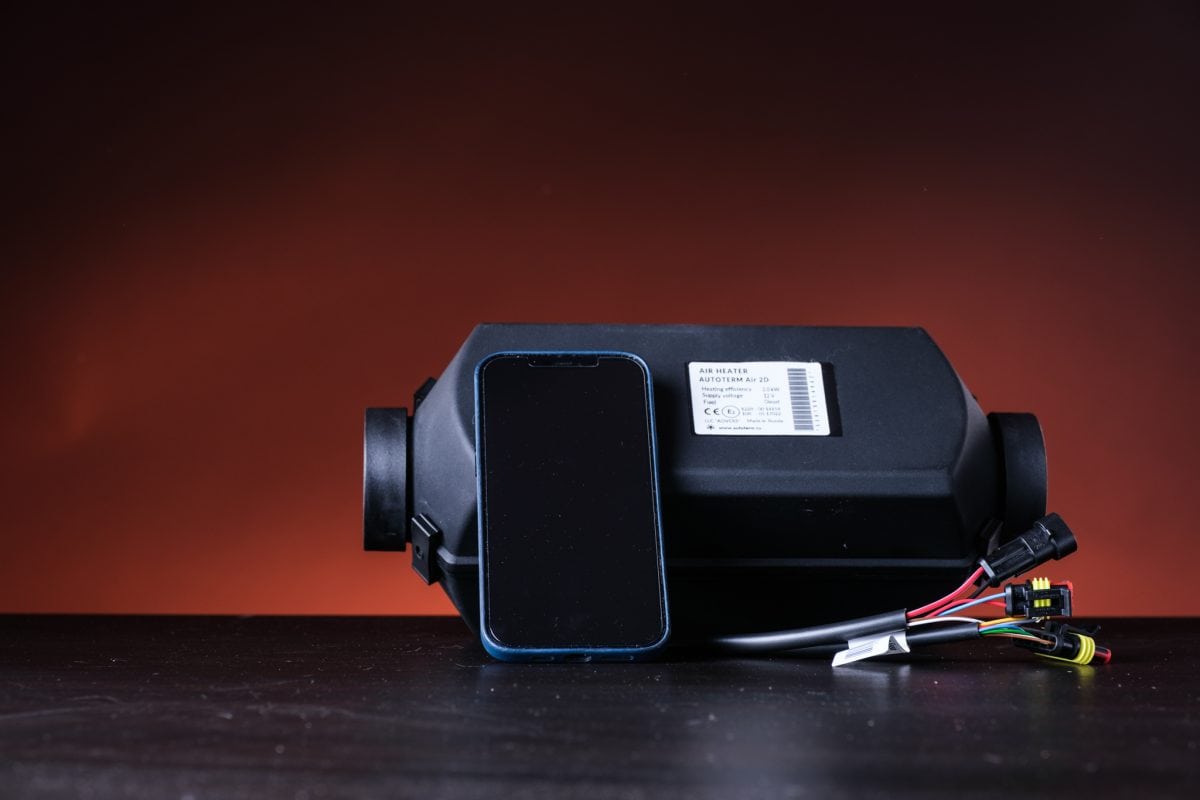
Gasoline heating in the camper
Rather a marginal phenomenon (since the fewest motorhomes have gasoline engines) is the gasoline heating. The considerations for gasoline heating are basically similar to those for diesel heating, but gasoline heating is hardly available in this country.
The solid fuel heating in the mobile home
In the Camper van off the peg there is one thing you certainly won’t find: a solid fuel heating system with which you can burn wood like in a tiled stove at home. However, it is not impossible to implement this Camper van heating by building it yourself.
But there is one thing you must never do: Use a flame or embers to heat the interior of the motorhome without properly venting the exhaust gases and providing fresh air! It is not without reason that adequate ventilation is required even for operating a gas flame for making coffee. Fire consumes oxygen in the interior and produces toxic fumes. That means you are not allowed to use your gas stove or your camping grill for heating. This has already resulted in deaths! A solid fuel heating always requires a correctly installed chimney for the discharge of the exhaust gases. You also need to ensure there is fresh air.
Another danger must of course not be overlooked either: In the Camper van, many materials are highly flammable and you move in a confined space. Sparks can have devastating effects.
André von Amumot mentions other disadvantages of wood heating :
- the resulting dirt ,
- the space required for the fuel as well as the need to provide permanent supplies,
- the smoke development (possibly unpleasant for neighbors)
- as well as inability to regulate the heating output . Here it happens quickly that the interior overheats uncomfortably. It is also difficult to react to changing outside temperatures.
The advantage of solid fuel heating results in a cozy living feeling like at home in front of the open fireplace or the tiled stove. Nothing can replace a crackling fire. In addition, it is often possible to get heating material free of charge (eg by collecting driftwood).
Reduce the heating requirement in Camper van
If you want to travel sustainably , it should be important not to have to heat more than necessary. Therefore, you should attach importance to sensible insulation .
Pay attention to good motorhome insulation
Sheet metal or a thin plastic outer skin hardly protects the vehicle interior from heat loss. For this reason, insulation mats are attached to the inside of the outer shell before they are clad (or built in with boxes).
With a fully built camper van you can only influence the insulation to a limited extent. You should therefore make sure before buying that high quality material (e.g. X-trem insulator) has been used in sufficient thickness.
However, improvements can often be made in accessible places possible, eg sliding doors, which are often neglected by the manufacturer.
Sensible insulation material for touching up in the mobile home
Many motorhomes are insufficiently insulated from the factory. If you want to do some work, you can repair it with suitable insulating material – for for example in sliding doors and rear doors of panel vans. There you can often remove the panels relatively easily and attach insulating material underneath.
Keine Produkte gefunden.
Fight insulation weaknesses
But even with fully developed mobile homes, there is still a lot that can be done against increased energy consumption:
- Insulate cold bridges
- Insulating mats for windows and in the footwell
Separate the cab and rear doors with thermal curtains
You can fight cold bridges with thick blankets and mats that are hung up in the appropriate places. With a thick mat / blanket between the living area and the driver’s cab, not so much heat can escape from the (poorly insulated) driver’s cab, and it also becomes more cozy in the living area. Versions for alcoves and integrated / box vans are available.
In addition, the rear doors (usually also poorly insulated) of panel vans can also be separated with thermal curtains.
Keine Produkte gefunden.
There are insulating mats for windows and the cab footwell. It is highly recommended to use them as well. Outside insulation mats are more effective than inside insulation mats and, in our opinion, also easier to apply.
Keine Produkte gefunden.
Finally, of course, the heating requirement can also be reduced with clothing . If you want to wear t-shirts inside in winter, you have to heat more than when you put on a sweater.
You can find more tips for winter camping in a motorhome here, and we have listed utensils to reduce the heating requirement here.
Manufacturer of RV heaters
The most common manufacturers of mobile home heating systems in this country are:
- Truma
- Eberspächer (specialist for diesel heating)
- Webasto
Conclusion
The camper van heating gives you cozy warmth in the camper van despite the low outside temperatures. It is essential for your well-being and is indispensable from autumn to spring and especially when winter camping in the Camper van. It is also irreplaceable for fans of the far north. Whether you rely on classic gas heating or prefer one of the alternatives depends, as so often, on your requirements.
